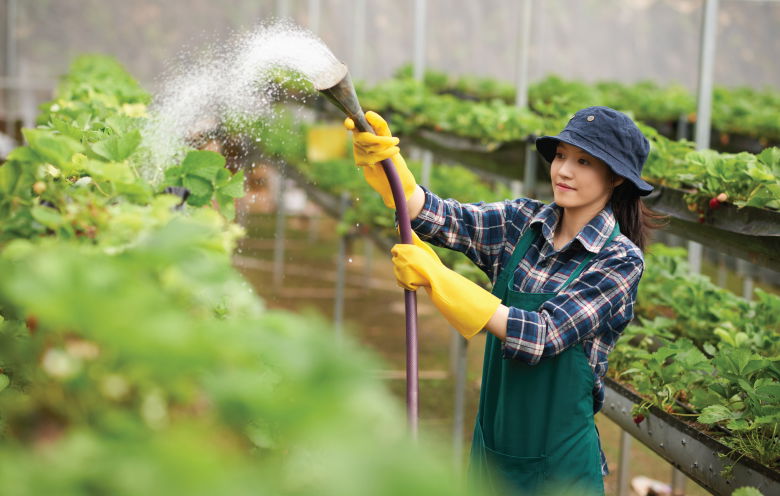As per the Food and Agriculture Organization of the United Nations, almost 60-70% of the world’s population depends upon agriculture for survival. Multiple factors affect a crop’s growth like light (quantity, quality, duration), temperature, water, humidity, fertilizers, etc. Though all the factors are essential, water is considered most important. Due to the unplanned and casual approach to water usage in domestic and industrial settings, there is unrestrained wastage of water resulting in the decrease of groundwater level day by day. Hence, it has become imperative to modernize conventional agricultural practices to conserve water and improve the productivity of crops.
A smart greenhouse monitoring system can monitor the irrigation system and several other factors affecting the crop’s growth by analyzing soil moisture and other climatic conditions.
Challenges
Farmers face two major challenges in irrigation scheduling:
Overwatering
Many times, the irrigation cycle is started too early and runs for too long in the absence of a proper monitoring system. This not only wastes water and money but also causes damage to the crop.
Underwatering
On the other hand, sometimes the irrigation cycle is started too late or not run for enough duration. This reduces yields and leads to poor crop growth which affects price and profits.
An IoT-based smart soil monitoring system helps to address these problems and minimizes their financial and practical impact on crop production. Let’s see how:
The traditional methods of soil irrigation lead to wastage of about 50% of the supplied water due to inefficiencies in irrigation, evaporation and overwatering. A smart soil irrigation system employs sensors to realize and inform watering routines in real-time to improve efficiency, thus saving water. A smart soil irrigation monitoring system not only helps you to save water, but it also uses sensors to realize and inform watering routines in real-time to improve efficiency.
A smart irrigation system has two types of controls:
1. Weather-based – The monitoring system uses local weather information derived from reliable weather sources, sensors and historical data to make watering schedule decisions. The system determines water schedules by analyzing data of different parameters like local temperature, humidity, insolation and wind.
2. Soil-based – The sensors integrated into the ground capture soil moisture data. The monitoring system uses this data to make water scheduling decisions. You can customize the system to act as per the moisture level required in the soil. For example, it can start irrigation when the soil/land is dry and stop irrigation when the moisture in soil/land reaches the required level.
Advantages of smart soil irrigation monitoring system
- It can optimize water levels as per soil moisture and weather predictions with the help of moisture sensors.
- It can determine when a farm/land needs to be watered based on local weather data.
- It will help you to have better control on your landscape and irrigation needs.
- It will save a substantial amount of money on your water bills as it cuts water wastage significantly.
Greenhouse monitoring solution
A greenhouse is used to grow crops under a controlled environment. Greenhouse cultivation has evolved to create favorable microclimates, which supports crop production throughout the year. It helps to protect crops from many diseases, especially the soil-borne ones.
Several farmers still fail to generate good profits from the crops that are grown in a greenhouse. This is mainly because, in the absence of an IoT-based greenhouse monitoring solution, they are not able to monitor and manage factors like temperature, luminosity, water level, relative humidity and carbon dioxide (CO2) in the greenhouse, which are essential for appropriate crop growth and productivity.
Thus, it is recommended to have a proper greenhouse monitoring system in place to have control on such factors. This system consists of temperature sensors, light sensors, soil moisture sensors, etc. to sense the present atmosphere inside the greenhouse and adjust it as per the required atmosphere for appropriate crop growth and productivity. This makes it convenient to monitor and control the environmental parameters like temperature, light, carbon dioxide levels, relative humidity, water, plant nutrients and pests inside a greenhouse.
Conclusion
As said above, it is crucial to monitor certain farming parameters to have better crop yield and productivity. Hence, it is imperative to have a proper greenhouse monitoring solution to monitor your greenhouse and help you control numerous parameters from remote locations as well. The applications of a smart greenhouse will not only help you to save manual labor, but it will also help you to avoid human errors and achieve better crop yield and profits. You will be able to apply the right amount of water and other supplements at the right time and control the systems in your greenhouse.

